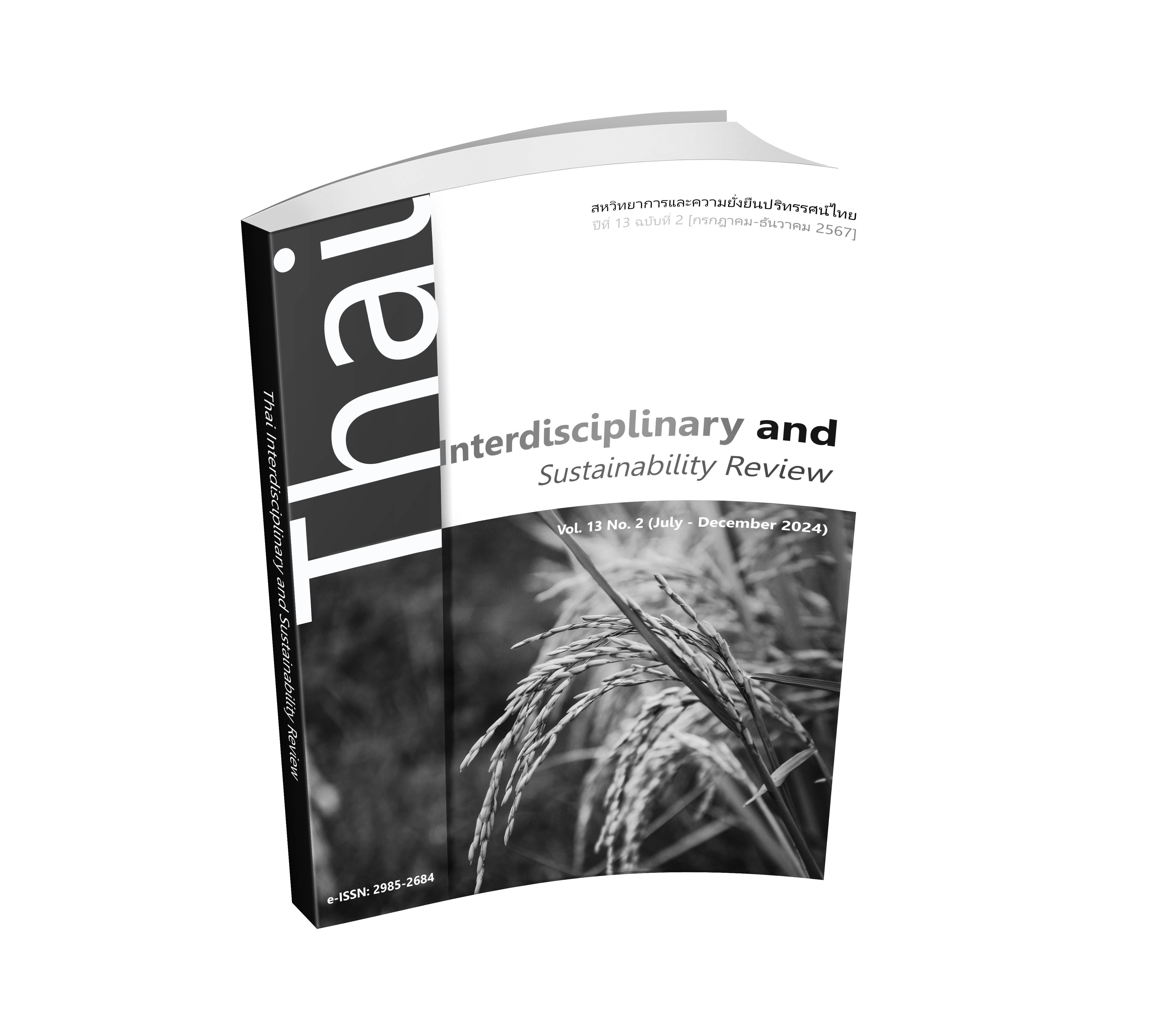DEVELOPMENT OF ALOE VERA PULP IN SYRUP
DOI:
https://doi.org/10.14456/tisr.2024.24Keywords:
Aloe Vera Pulp, Syrup, Osmotic DehydrationAbstract
The purpose of this study was to develop aloe vera pulp in syrup. According to a survey of 100 consumers' needs, it was found that the product development method is to slice 1.5-2 cm. aloe vera pulp in a 5-ounce cup and use the green apple flavor. And consider the use of green apple green to be used for further studies in color and flavoring. The condition of development of aloe vera pulp in syrup It was found that aloe vera pulp in each syrup formula had no effect on the lightness (L*) of the product, but when the sugar concentration was increased, it resulted in the redness ( a*) of aloe vera flesh in syrup was increased and the highest accepted formulation was aloe vera pulp in syrup with sugar : citric acid : water ratio, 60. : 0.5 : 39.5 (moderately like very much) and when studying the color and smell, it was found that the color and smell resulted in higher product liking. The sample that has been accepted by consumers the most is 100 times diluted 5% green apple supplement with 0.01% green apple flavor (moderate to very like) with a shelf life of 60. day, with the level of like moderate to very like.
Downloads
References
สำนักงานมาตรฐานผลิตภัณฑ์อุตสาหกรรม. (2556). มาตรฐานผลิตภัณฑ์ชุมชน มผช.127/2556 น้ำว่านหางจระเข้. สืบค้นจาก https://tcps.tisi.go.th/pub/tcps0127_56(น้ำว่านหางจระเข้).pdf.
Choi, S., & Chung, M. (2003). A review on the relationship between aloe vera components and their biologic effects. Seminars in Integrative Medicine, 1(1), 53-62.
Cui, H., Yu, J., Zhai, Y., Feng, L., Chen, P., Hayat, K., Xu, Y., Zhang, X., & Ho, C. (2021). Formation and fate of Amadori rearrangement products in Maillard reaction. Trends in Food Science & Technology, 115, 391-408.
El-Sayed, S., & El-Sayed, H. (2020). Production of UF-soft cheese using probiotic bacteria and Aloe vera pulp as a good source of nutrients. Annals of Agricultural Sciences, 65(1), 13-20.
Fortune Business Insights. (2020). Confectionaery Size, Share & Covid-19 Impact Analysis, By Type (Chocolate, Sugar and Gums), Distribution Channel (Hypermarket/Supermarket, Convenience Stores, Departmental Stores, and Online Retails), and Regional Forecast, 2021-2028. Maharashtra: Fortune Business Insights.
Garber Jr., L., Hyatt, E., & Nafees, L. (2016). The Effects of Food Color on Perceived Flavor: A Factorial Investigation in India. Journal of Food Products Marketing, 22(8), 930-948.
Mahmoud, M., Fagiry, M., Davidson, R., & Abdelbasset, W. (2022). The benefits, drawbacks, and potential future challenges of the most commonly used ultrasound-based hurdle combinations technologies in food preservation. Journal of Radiation Research and Applied Sciences, 15(1), 206-212.
Princy, A. (2021). Health Risks of Consuming Excessive Confectionery Products. Retrieved from www.researchdive.com/blog/health-risks-of-consuming-excessive-confectionery-products.
Shelton, M. (1991). Aloe Vera, Its Chemical and Therapeutic Properties. International Journal of Dermatology, 30, 679-683.
Spence, C. (2015). On the Psychological Impact of Food Colour. Flavour, 4, 21.
Spence, C. (2019). On the Relationship(s) Between Color and Taste/Flavor. Experimental Psychology, 66(2), 99-111.
Spence, C., & Piqueras-Fiszman, B. (2016). Food Color and Its Impact on Taste/Flavor Perception. In Multisensory Flavor Perception (pp. 107-132). North Holland: Elsevier Ltd.
Statista. (2023). Confectionery-Thailand. Retrieved from www.statista.com/outlook/cmo/food/confectionery-snacks/confectionery/Thailand.
Surjushe, A., Vasani, R., & Saple, D. (2008). Aloe Vera: A Short Review. Indian Journal of Dermatology, 53(4), 163-166.

Downloads
Published
How to Cite
Issue
Section
License
Copyright (c) 2024 Authors

This work is licensed under a Creative Commons Attribution-NonCommercial-NoDerivatives 4.0 International License.









.png)


